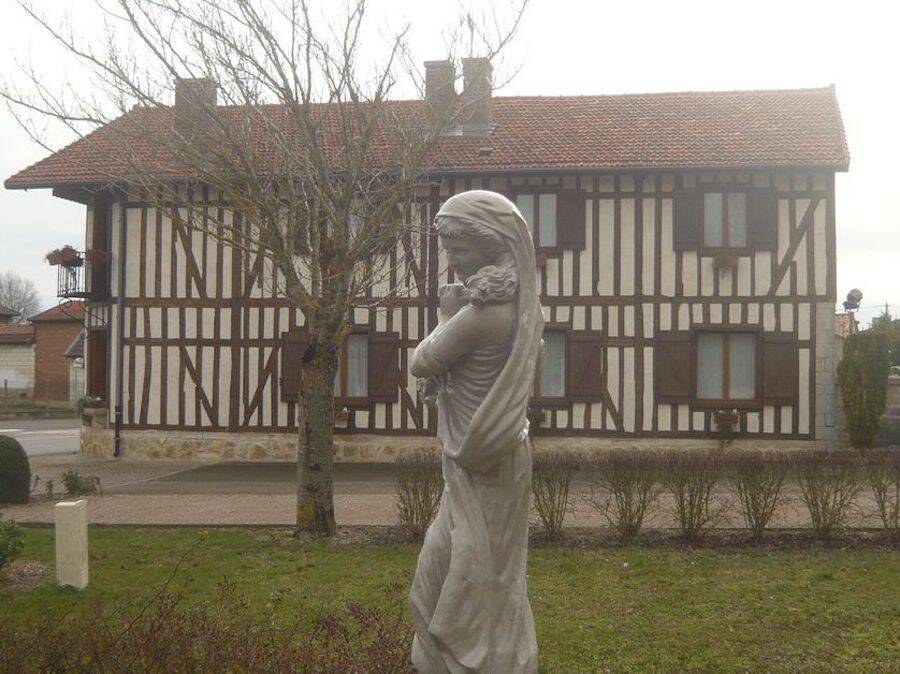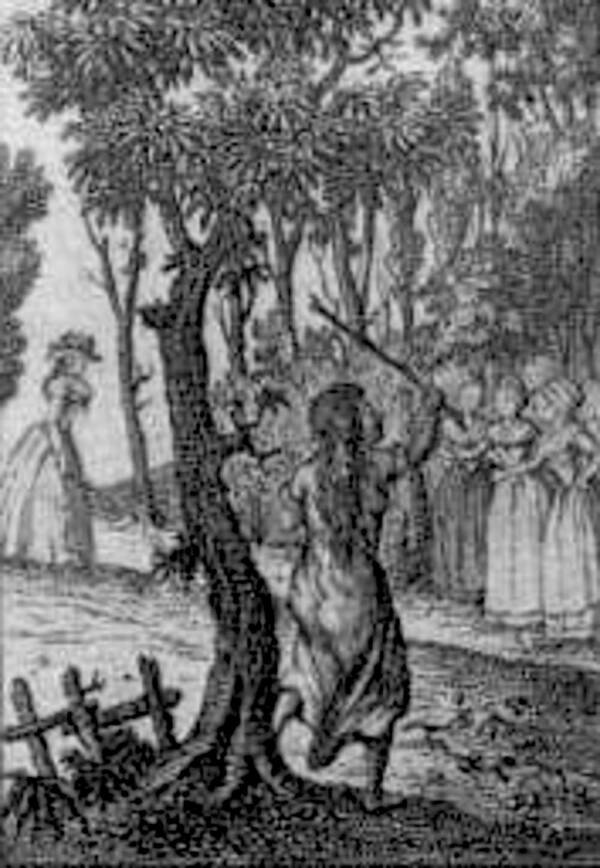Marie-Angélique Memmie Le Blanc: The Feral Child Who Went From Rags To Riches

PepitasEditora/TwitterA statue of Marie-Angélique Memmie Le Blanc in Songy, France.
In 1731, villagers in Songy, France spotted a young girl dressed in animal rags stealing apples from an orchard. It was difficult for the villagers to tell how old she was, and her age was estimated to be anywhere from 10 to 18.
When the villagers sent a bulldog her way, she killed it with one fatal blow and escaped into the woods in mere moments. The villagers eventually captured her and soon realized that she didn’t speak any formal language. Instead, she communicated much like an animal, often howling.
Hospitalized in Chalons, she was baptized as Marie-Angélique Memmie Le Blanc. With that, doctors and other experts immediately moved toward “civilizing” her. It was clear that she had only been eating raw meat when doctors fed her cooked food — and all of her teeth fell out.

JSTORAn illustration of Le Blanc’s encounter with villagers from An Account of a Savage Girl.
The feral child’s origins were only revealed in 1755 when biographer Marie-Catherine Homassel-Hecquet published An Account of a Savage Girl in collaboration with Le Blanc. A Native American girl, Le Blanc had allegedly been painted black and sold as a slave in Wisconsin at age seven. Sold to a French woman, Le Blanc was put on a France-bound ship.
Many believe that the boat in question was shipwrecked, and Le Blanc washed ashore with another girl. From there, they both became feral people and slept in the wilderness, surviving on raw squirrels, foxes, and rabbits. At some point, the pair separated, and Le Blanc was eventually captured.
Despite her traumatic start to life, Le Blanc would eventually regain her health while in the hospital. Even more incredible, she soon learned to speak French under the tutelage of several patient teachers, apparently regaining linguistic abilities that had been lost for quite some time.
She was gawked at by intellectuals and high-society people in France as a former “savage” who had become refined. Mingling with nobility, Le Blanc was given a generous allowance by a duke and permitted to explore Europe. For a brief period of time, she even tried her hand at becoming a nun.
While the duke’s death in 1752 left Le Blanc without financial recourse, she was soon able to secure other patrons thanks to her numerous wealthy connections. By the time she died at age 63 in 1775, she was notably wealthy herself. It was said that she preferred to wear silk and velvet clothing — and yet she still maintained “a certain wildness” in her appearance.





